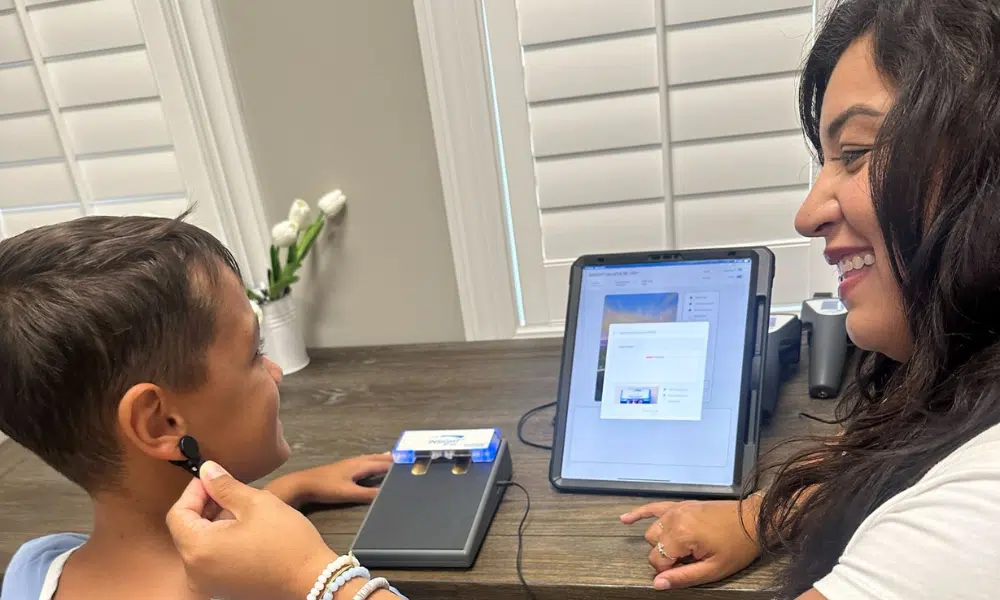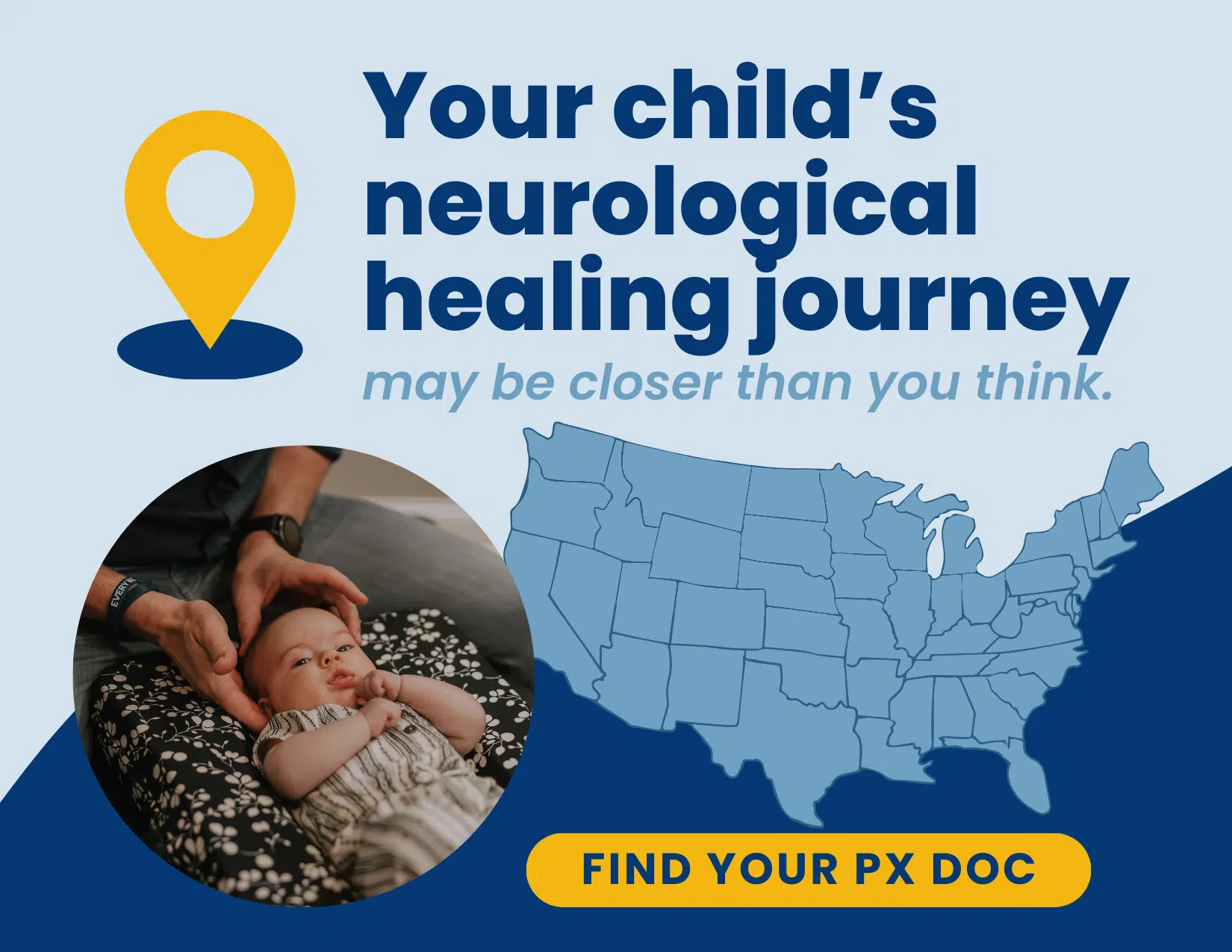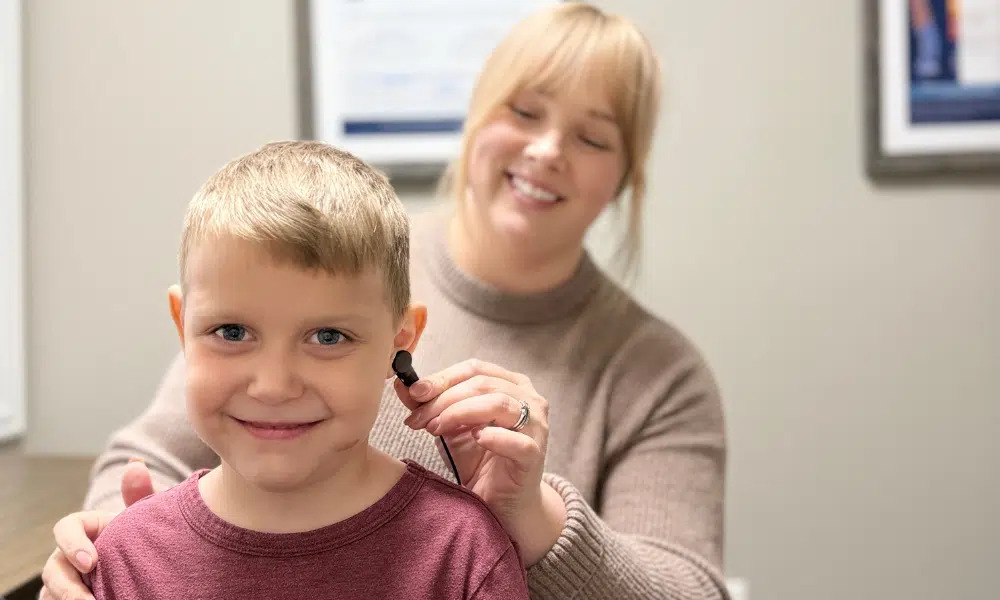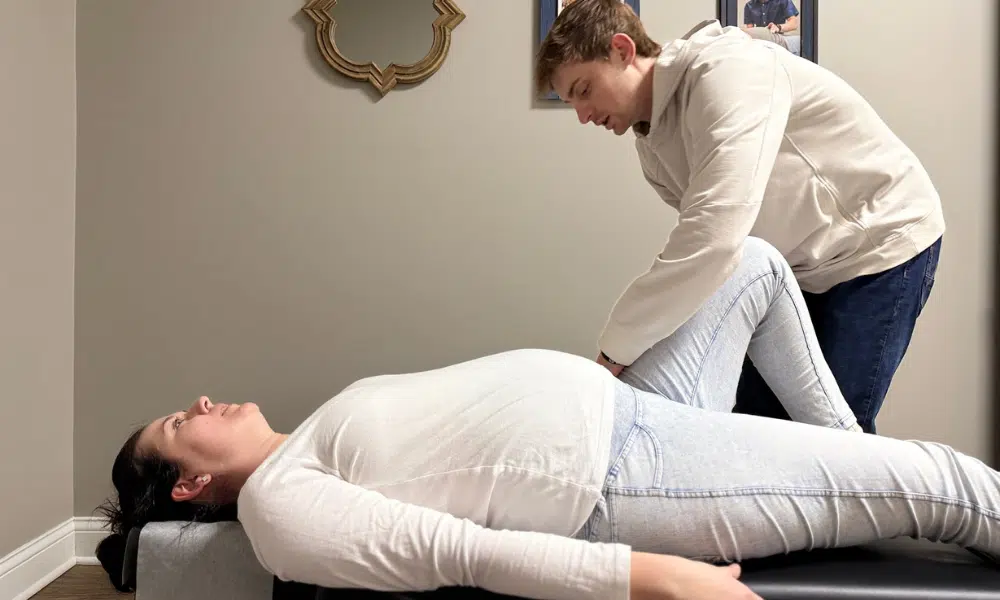Postural Orthostatic Tachycardia Syndrome, or POTS, affects an estimated 1-3 million Americans and millions more around the world. Imagine being the parent of a once active, thriving child who suddenly develops a racing heart, dizziness, and exhaustion every time they stand up.
These spells seem to be happening more and more frequently, impacting your child’s ability to participate in school, sports, and everyday activities. Desperate for answers, you shuttle from doctor to doctor but are told again and again that it’s just anxiety, growing pains, or worse—that it’s all in your child’s head.
If this situation sounds all too familiar, you’re not alone. This is the reality faced by countless families struggling to understand and manage the life-altering symptoms of POTS. But what if there were a different way to view this condition?
Enter PX Docs—a network of specialized Pediatric and family chiropractors who view POTS through the lens of nervous system dysfunction and dysregulation, not merely its signs and symptoms. We understand the neurological origins of this complex syndrome and are committed to providing families with real answers and drug-free solutions to help their children reclaim their health and quality of life.
What is POTS Syndrome?
So, what is POTS? Postural Orthostatic Tachycardia Syndrome (POTS) is an autonomic nervous system disorder characterized by an abnormal increase in heart rate upon standing.
Specifically, POTS is diagnosed when the heart rate increases by 30 beats per minute (bpm) or more within 10 minutes of standing or head-up tilt without orthostatic hypotension (a drop in blood pressure upon standing).
While the diagnostic criteria focus on the heart rate response, POTS is a complex syndrome that can manifest with a wide variety of symptoms, including:
- Lightheadedness or dizziness upon standing, sometimes leading to fainting
- Chronic fatigue and weakness
- Exercise intolerance
- Brain fog, difficulty concentrating, and memory issues
- Headaches
- Heart palpitations or a feeling of a racing heartbeat
- Shakiness or tremors
- Nausea, bloating, and other gastrointestinal symptoms
- Temperature dysregulation (feeling too hot or too cold)
- Sleep disturbances
The severity of these symptoms can vary from person to person, with some children experiencing mild discomfort and others finding it difficult to function in their daily lives. Many children with POTS report feeling chronically unwell, which can lead to missed school days, social isolation, and a decreased overall quality of life.
The Neurological Origins of POTS Syndrome
To truly understand POTS, we must dive deeper into the role of the autonomic nervous system (ANS). The ANS regulates involuntary functions such as heart rate, blood pressure, digestion, and temperature control. It consists of two main branches:
- The sympathetic nervous system (SNS), often called the “fight or flight” response, activates in times of stress.
- The parasympathetic nervous system (PNS), known as the “rest and digest” response, promotes relaxation and recovery.
In a healthy individual, these two branches work together to maintain balance and homeostasis. However, in children with POTS, there is often an imbalance or dysregulation of the ANS, with an overactive sympathetic response and an underactive parasympathetic response. This condition known as dysautonomia, can be triggered by various factors, which PX Docs calls “The Perfect Storm.”
“The Perfect Storm”, refers to a combination of stressors and traumas during the sensitive early developmental stages that then disrupt a child’s neurological and overall health. These stressors include:
- Fertility + prenatal stress 🤰
- Birth interventions + trauma (forceps, vacuum, c-section, induction, etc.) ⚒️
- Early + frequent exposure to toxins ☠️
- The misuse + overuse of antibiotics and other medications 💊
This term highlights how these overlooked factors create a “storm” of dysfunction deep within the nervous system, setting the stage for significant developmental delays and long-term health challenges.
One of the most significant factors in this “Perfect Storm” is the presence of subluxation, or communication misalignments that can disrupt normal nervous system function. When subluxations occur in the upper cervical region, they can directly impact the function of the vagus nerve, a key player in the parasympathetic nervous system. This can contribute to the dysautonomia seen in POTS.
Types and Causes of POTS Syndrome
While the exact mechanisms behind POTS are still being researched, several distinct subtypes have been identified based on their underlying causes and characteristics:
- Neuropathic POTS: This subtype is associated with small fiber nerve damage that regulates blood vessel constriction and dilation.
- Hyperadrenergic POTS: Characterized by elevated levels of norepinephrine, a stress hormone that can cause increased heart rate and blood pressure.
- Hypovolemic POTS: Occurs when blood volume decreases, often due to dehydration or blood loss.
- Secondary POTS: Develops as a result of another underlying condition, such as Ehlers-Danlos syndrome, Lyme disease, or autoimmune disorders.
In recent years, there has also been growing evidence to suggest a link between POTS and COVID-19. Many individuals who have recovered from the virus have reported ongoing symptoms similar to those seen in POTS, leading some experts to hypothesize that the infection may trigger autonomic dysfunction in certain people.
Long COVID can cause Vagus Nerve Dysfunction, disrupting the autonomic nervous system and leading to Dysautonomia, which affects heart rate, blood pressure, and other involuntary functions. This dysfunction can trigger or exacerbate POTS, a condition where a person experiences a significant increase in heart rate upon standing, leading to dizziness, fatigue, and other symptoms. These conditions often overlap, contributing to the complexity of Long COVID.
Diagnosing POTS Syndrome
Diagnosing POTS can be challenging, as the symptoms often mimic those of other conditions. For this reason, it’s essential to get a comprehensive evaluation from a knowledgeable healthcare provider if you suspect your child has POTS.
This evaluation typically includes:
- A detailed medical history and physical examination
- Orthostatic vital signs, measuring heart rate and blood pressure while lying down and standing up
- A tilt table test, which involves monitoring heart rate and blood pressure while the patient is tilted at a 60-70 degree angle
- Other tests to rule out conditions with similar symptoms, such as cardiac disorders, endocrine imbalances, or neurological conditions
Unfortunately, many children with POTS struggle to receive a proper diagnosis, as the condition is often misunderstood or dismissed by conventional medical providers. This can lead to a lengthy and frustrating journey for families seeking answers and support.
The PX Docs Approach to POTS Syndrome
At PX Docs, we recognize that the key to effectively caring for POTS patients lies in addressing the root cause of the nervous system dysfunction, dysregulation, and dysautonomia. Our approach begins with a comprehensive evaluation, including advanced diagnostic tools like INSiGHT Scans, which allow us to identify specific patterns of subluxation and dysautonomia in each child and patient.
Armed with this information, our trained Neurologically-Focused Chiropractors develop a customized care plan to stimulate the parasympathetic nervous system and reduce sympathetic dominance.
The entire goal of our care is to restore function, regulation, and balance to the nervous system.
If your child is struggling with the symptoms of POTS, know that you are not alone and that there is hope. We encourage you to find a PX Doc near you to learn how we can support your family on the journey to optimal health and well-being.
Together, we can help your child unlock their full potential and enjoy the vibrant, active life they deserve!





